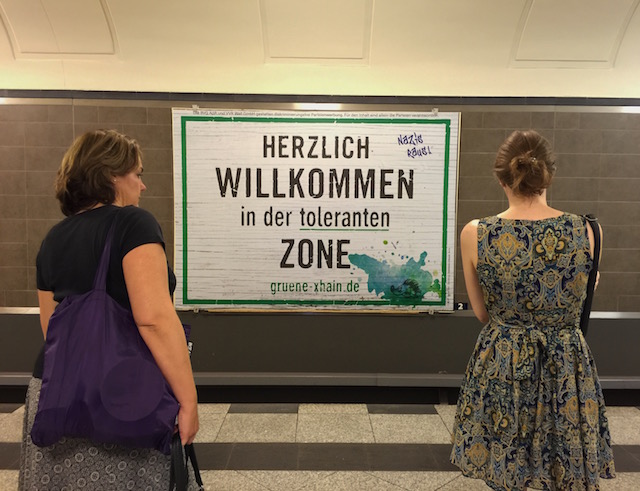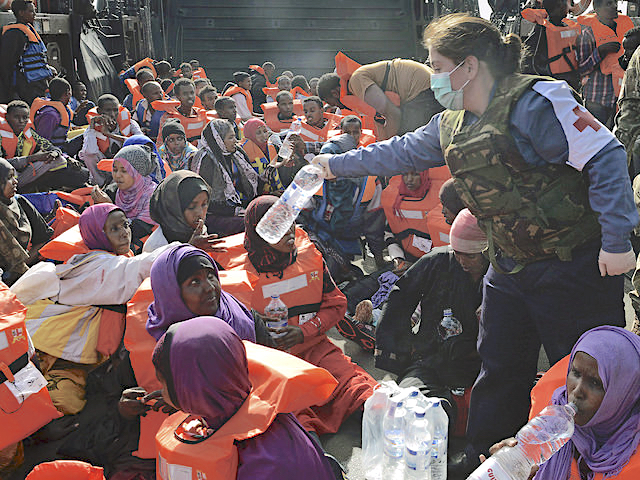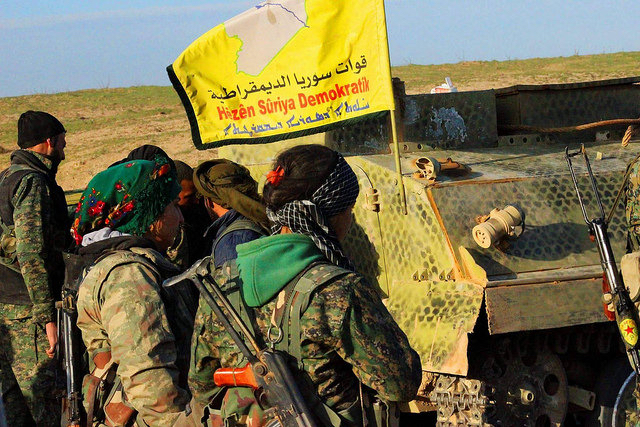Much of the responsibility in caring for refugees arriving in Germany has fallen to local authorities.
This has brought challenges, but also successful innovations that must be widely shared – and quickly, says Brookings Institution scholar Bruce Katz.
BETWEEN JANUARY 2015 and July 2016, 1.3 million migrants and refugees fleeing poverty and economic deprivation arrived in Germany. The arrival of so many people, most of them in need of a home, food and healthcare, posed immense humanitarian challenges for the country’s leaders and communities as a whole.
A new study by the Brookings Institution found that much of the responsibilities for accommodating refugees in the country fell to those working at a local level. The lessons learned on the front lines of Germany’s response to the crisis could have lasting implications for cities around the world, the study says.
The report, called “Cities and Refugees – The German Experience,” was released last week during the United Nations General Assembly meeting in New York. Its authors, Bruce Katz, Luise Noring and Natnke Garrelts, examined how refugees have been distributed in Germany in the past 18 months and how cities across the country responded to that challenge.
They concluded that successful handling of the crisis will depend on whether European cities are given a greater voice in international decision making and receive greater financial and political support.
Refugees Deeply spoke with Bruce Katz, Centennial Scholar at the Brookings Institution, about the research.
Refugees Deeply: Nearly 60 percent of refugees today live in urban areas, placing huge responsibilities on local authorities. Yet these cities don’t always have the funding or authority to respond adequately. How did that disconnect play out in Germany?
Bruce Katz: Germany is a federal republic with a federal government, 16 states and hundreds of cities and municipalities. Three of the states – Hamburg, Bremen and Berlin – are city-states and combine the functions of a city and a state. Responsibility for substantial domestic activities in Germany, like housing, schools and many of the labor market efforts are locally and state based.
https://www.youtube.com/watch?v=wmOsaboEjus
Germany is a highly devolved federal republic and that has meant that cities do have power and agency. Responding to the refugee crisis, Germany’s national government has used its powers to open the border, and to reset the rules around citizenship and integration. However, a lot of the responsibility for the response, not just in the delivery of services but also the actual design and financing of them, has fallen to local and state governments, and to a burgeoning network of nonprofits that has emerged in the aftermath of the crisis.
As this crisis goes forward and the focus shifts from short-term response to longer-term integration, there does need to be more of a federal role in investment and finance, and more support so that when one city cracks the code on a particular set of issues or comes up with an innovative response, other cities know about it in rapid fashion.
Refugees Deeply: How did the cities you studied handle the influx of refugees? What were the successes and what were the challenges?
Katz: The challenges were pretty substantial. The federal government distributed refugees according to a formula that was previously used to distribute research money to different states in the federal republic. That led to higher density in the city-states, particularly in Berlin and Hamburg, and affordability issues with housing.
The biggest challenge initially was finding accommodation for refugees that didn’t just provide basic, humane shelter but were a platform for moving forward. We’ve learned, including from the aftermath of natural disasters in the U.S., that it’s really critical to bring normalcy to people’s lives as quickly as you can. That means running facilities for refugees in places with access to services and a guarantee that families have privacy and children can go to school as quickly as possible. That’s what brings back routine to people’s lives.
All of these challenges – housing, education, access to services – were magnified in states like Hamburg and Berlin because, as city-states, they have a limited amount of land. To their credit, they moved as quickly as possible to find accommodation and innovative ways to locate facilities. The old American notion that crisis begets innovation is very much apparent when you go to Germany and compare what the crisis looks like today and what it looked like last September.

Refugees Deeply: Could you describe one of the innovations that struck you the most?
Katz: I was struck by an effort in Hamburg called Finding Places, which is a collaboration between MIT, Hamburg City University, the city government and the residents of Hamburg. It’s an open access data system allowing citizens to look at available land and buildings and verify whether they’re really there. Citizens also help think about how their communities can begin to get past nimbyism and how to communally decide how to use assets so refugees aren’t concentrated in particular parts of the city, but instead land and buildings are used smartly to distribute refugees and give them a good start.
In Berlin, I saw the use of shipping containers for housing in a very sensitive way. The community was well-landscaped, and it really felt like housing that a family could live in for a substantial amount of time. What we’re always looking for when we’re seeing the response to refugees is whether some of these lessons and innovations could be used for other issues: for example, the big homelessness problem in the U.S.
Refugees Deeply: David Miliband, president of the IRC (International Rescue Committee), argued at Brookings last week that it makes economic sense to invest in the resettlement of refugees. Have you found that to be the case in your research in Germany?
Katz: Europe definitely faces broader labor market and demographic issues because of the aging of society, but the response to refugees has been for humanitarian reasons first and foremost. I believe Germany really had a moral conviction to open up its borders and help people fleeing conflict. That requires a short-term response and a long-term response, and there are questions about how efficient and effective that response can be when you’re faced with the arrival of tens of thousands of people in a very short period of time.
Integrating large numbers of people into your economic system, let alone your social system, requires an intense focus on education and skills. Going forward, the question of schools and skills is both imperative and incredibly challenging. Germany has a highly sophisticated economy with very rigid credentials, and that’s a challenging labor market to integrate refugees in. You need to speak in German and you need to have a serious level of skill to access many of the jobs in the productive sector of the German economy.
Refugees Deeply: Many refugees prefer to resettle in areas where fellow nationals have settled. On the other hand, the potential formation of parallel societies with increasingly segregated urban neighborhoods is a major concern for policymakers. What policies could help refugees benefit from the support of a community and network, while at the same time avoiding patterns of segregation?
Katz: This is one of the most serious questions countries like Germany, France, Belgium and Sweden face – already from prior waves of immigration. It’s not surprising refugees want to move to an area where there’s more comfort and cultural familiarity when they first arrive in a place, particularly when they don’t speak the language. The U.S., with its different migration waves, has seen this pattern repeat itself again and again.
One of the challenges is how this relates to the housing markets. We’ve seen that housing prices in certain parts of Germany are not just forcing people to specific parts of the cities, but are forcing people outside of the city. You’ll find large numbers of migrants and refugees, not only in the core cities but in many small municipalities outside the city. Because housing and labor markets are metropolitan it will require a broader metropolitan response. We’re undertaking research right now to thinking about multi-municipal responses, particularly in places like Germany where so much power is devolved down.
Where enclaves do exist, we need to think how we can ensure that they’re as open and networked as they can possibly be. In the U.S., we’ve always talked about building neighborhoods of choice and connection. You want people to choose where they want to live, but those communities need to be connected into the broader city and the broader metropolis through labor markets, housing markets and other kinds of services and activities. I’m not saying the U.S. is a shining example, but once we start talking about city innovations, what happens in Houston matters in Hamburg and vice versa. Going forward, in responding to these kinds of humanitarian crises, we’re going to see a lot more sharing across cities rather than just beyond national borders.
This article originally appeared on Refugees Deeply, and you can find the original here. For important news about the war in Syria, you can sign up to the Refugees Deeply email list. Photograph courtesy of Joel Schalit. All rights reserved.





